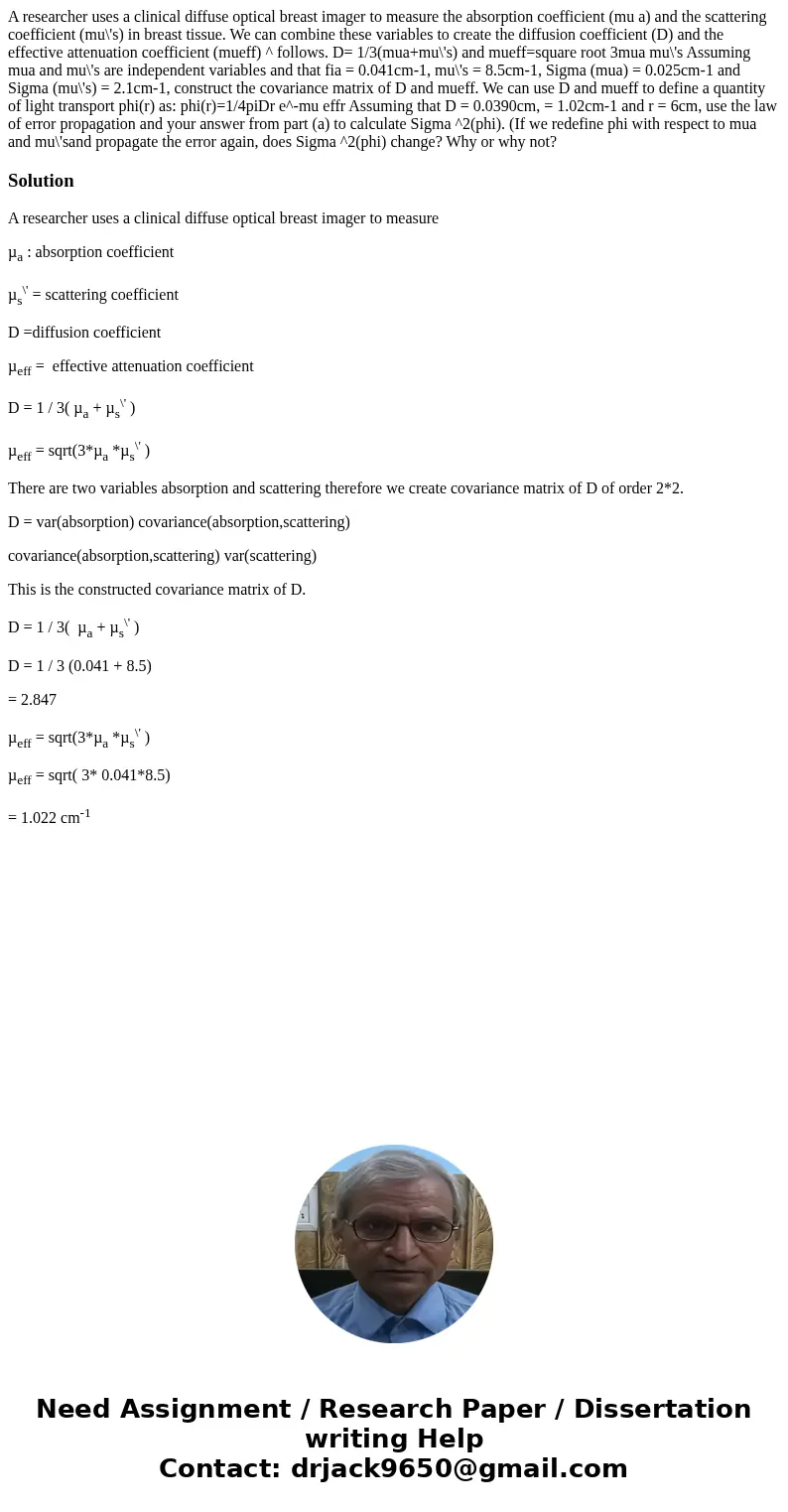A researcher uses a clinical diffuse optical breast imager t
A researcher uses a clinical diffuse optical breast imager to measure the absorption coefficient (mu a) and the scattering coefficient (mu\'s) in breast tissue. We can combine these variables to create the diffusion coefficient (D) and the effective attenuation coefficient (mueff) ^ follows. D= 1/3(mua+mu\'s) and mueff=square root 3mua mu\'s Assuming mua and mu\'s are independent variables and that fia = 0.041cm-1, mu\'s = 8.5cm-1, Sigma (mua) = 0.025cm-1 and Sigma (mu\'s) = 2.1cm-1, construct the covariance matrix of D and mueff. We can use D and mueff to define a quantity of light transport phi(r) as: phi(r)=1/4piDr e^-mu effr Assuming that D = 0.0390cm, = 1.02cm-1 and r = 6cm, use the law of error propagation and your answer from part (a) to calculate Sigma ^2(phi). (If we redefine phi with respect to mua and mu\'sand propagate the error again, does Sigma ^2(phi) change? Why or why not? 
Solution
A researcher uses a clinical diffuse optical breast imager to measure
µa : absorption coefficient
µs\' = scattering coefficient
D =diffusion coefficient
µeff = effective attenuation coefficient
D = 1 / 3( µa + µs\' )
µeff = sqrt(3*µa *µs\' )
There are two variables absorption and scattering therefore we create covariance matrix of D of order 2*2.
D = var(absorption) covariance(absorption,scattering)
covariance(absorption,scattering) var(scattering)
This is the constructed covariance matrix of D.
D = 1 / 3( µa + µs\' )
D = 1 / 3 (0.041 + 8.5)
= 2.847
µeff = sqrt(3*µa *µs\' )
µeff = sqrt( 3* 0.041*8.5)
= 1.022 cm-1

 Homework Sourse
Homework Sourse